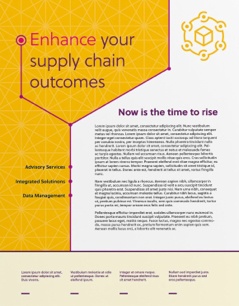 An increasing number of purchasing departments are investing in Source to Pay (S2P) supply chain solutions to improve their organizational performance and create efficiencies within procurement. While it’s true that most of the procurement software on the market today will help automate redundant tasks and drive process improvements, in order to truly maximize the benefits of your supply chain solution, it’s imperative that you select a tool that addressed your industry and organization’s unique needs.
An increasing number of purchasing departments are investing in Source to Pay (S2P) supply chain solutions to improve their organizational performance and create efficiencies within procurement. While it’s true that most of the procurement software on the market today will help automate redundant tasks and drive process improvements, in order to truly maximize the benefits of your supply chain solution, it’s imperative that you select a tool that addressed your industry and organization’s unique needs.
That’s a lot easier said than done. With so many players in the game, how can you ensure that you’re choosing the right tool? In this case, many turn to the Gartner Magic Quadrant to help them navigate the S2P software selection process. Let’s talk about what a Magic Quadrant is, how this resource is most commonly used, and how you can go beyond it when choosing a supply chain solution for your organization.
Understanding the Gartner Magic Quadrant
Gartner defines a Magic Quadrant as “a culmination of research in a specific market, giving you a wide-angle view of the relative positions of the market's competitors.” Magic Quadrants are an incredibly useful starting point to help you compare and ultimately choose between vendors with similar products.
By educating yourself on competing market technology providers and how successful they are at delivering the results that end users require, you can make a much more strategic, informed decision when selecting a S2P solution for your organization. Many companies utilize Magic Quadrants to narrow down vendors and eliminate those that are not performing as well in their category.
A Magic Quadrant graphically categorizes vendors by four different types of technology provider: leaders, visionaries, niche players, and challengers.
According to Gartner:
- Leaders execute well against their current vision and are well positioned for tomorrow.
- Visionaries understand where the market is going or have a vision but do not execute well.
- Niche players focus successfully on a small segment
- Challengers execute well today but do not demonstrate an understand of market direction
Going Beyond the Quadrant for Tool Selection
Despite the obvious benefits of using a Magic Quadrant to help you narrow down potential vendors, it’s important to go beyond it when selecting a supply chain solution. A Magic Quadrant should primarily be used as a reference point that offers an objective perspective on the different players in the S2P space. By developing a better understanding of the criteria that analysts use to grade, you can determine if their recommendations are the right fit for your organization.
To develop Magic Quadrants, Gartner analysts use standard criteria to measure two key factors: the ability to execute and the completeness of vision, both of which are clearly reflected in how Gartner defines the four different types of technology providers. To understand the completeness of a vendor’s vision, the analysts take multiple things into consideration, including market understanding, marketing strategy, business model, sales strategy, offering strategy, innovation, and more.
Ultimately, your selection should be based on the solution’s ability to address your industry’s uniqueness and your organizations specific business needs. What works for some organizations will not fit for others. Be careful to not use the Magic Quadrant as more than a guide to help you narrow the selection down to a few key players in the S2P/P2P category. Also keep in mind the criteria that was used for the analysis. It is important to know what solutions were included/excluded and the basis for how the solutions were evaluated. In addition to reviewing the Magic Quadrant, make sure you do your own due diligence and be careful to not make assumptions based on outside analysis. Remember, the magic quadrant is a guide to know where to look and focus your attention, but not the proverbial "easy button" of software selections. Organizations that treat it as such typically experience many surprises and hidden “gotchas” during their implementation.







Comments